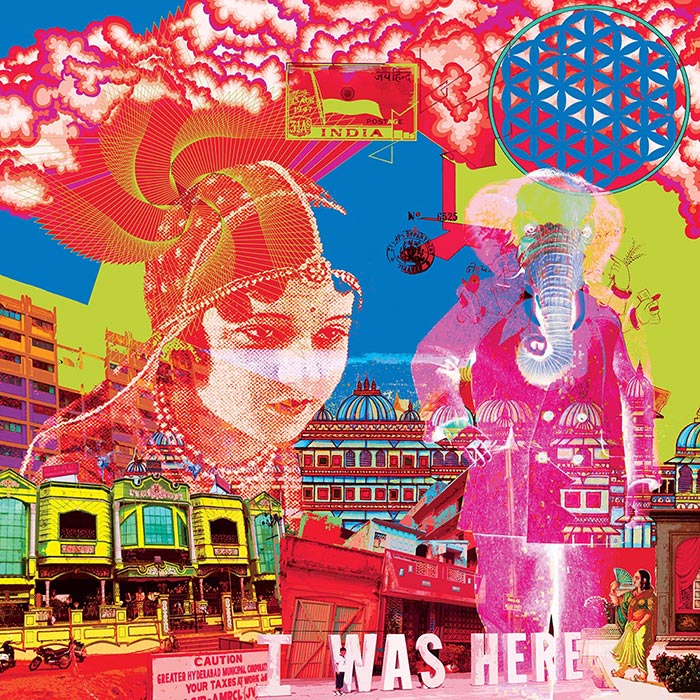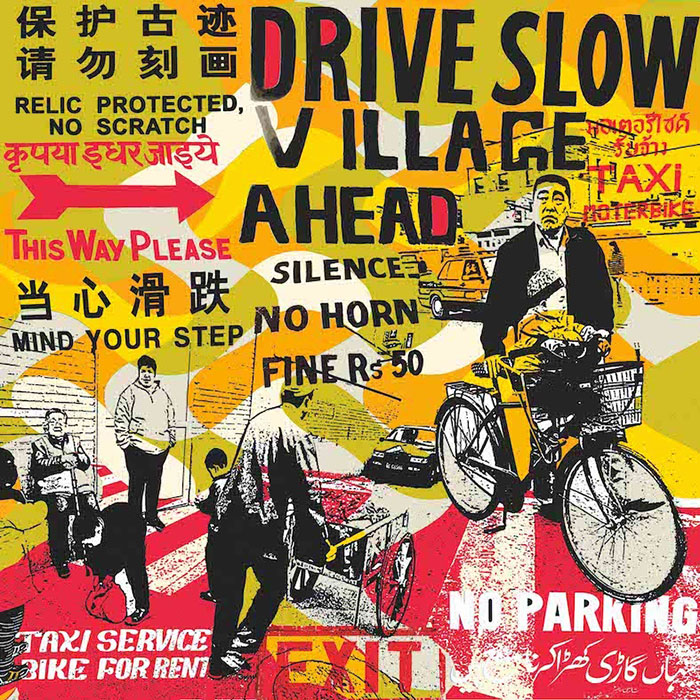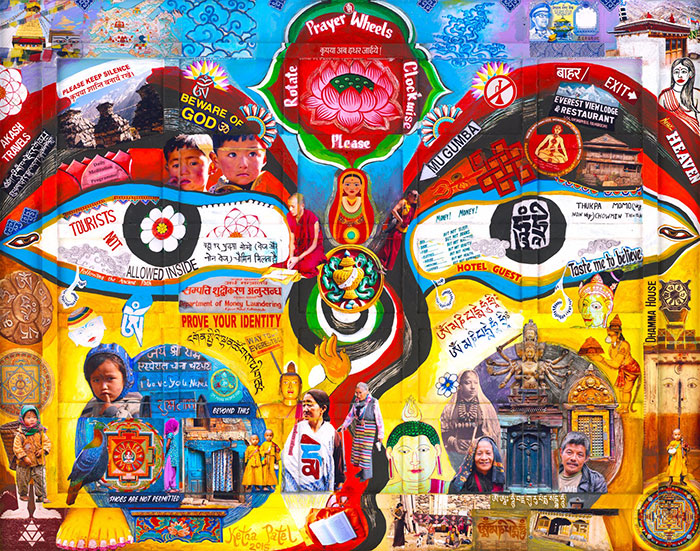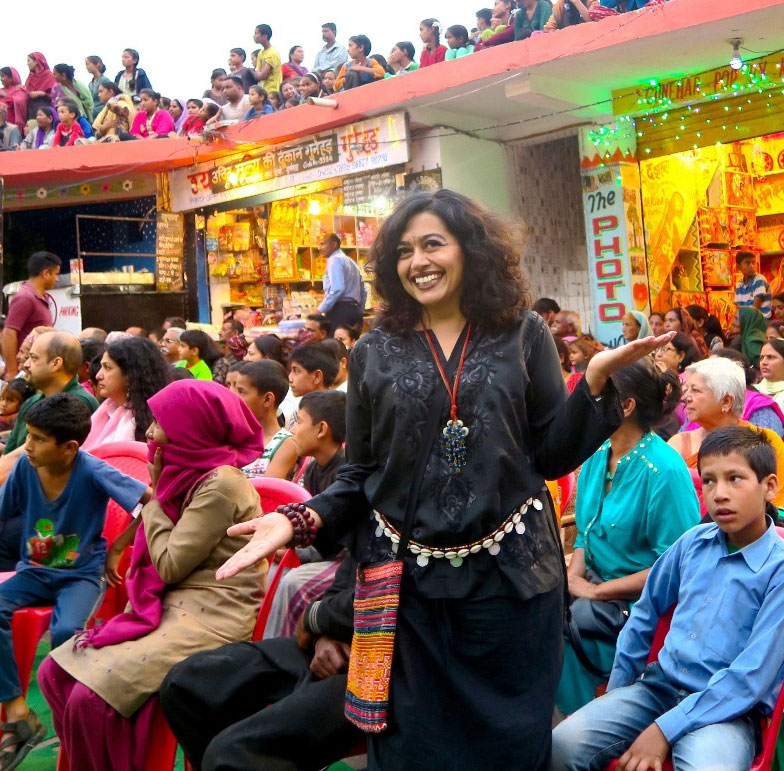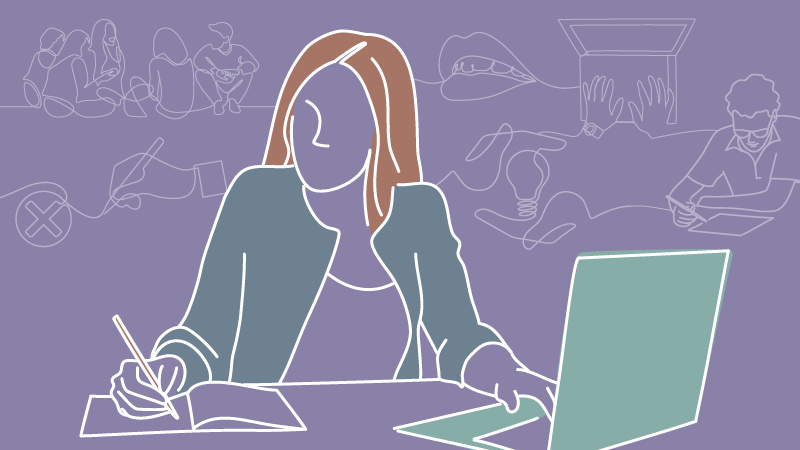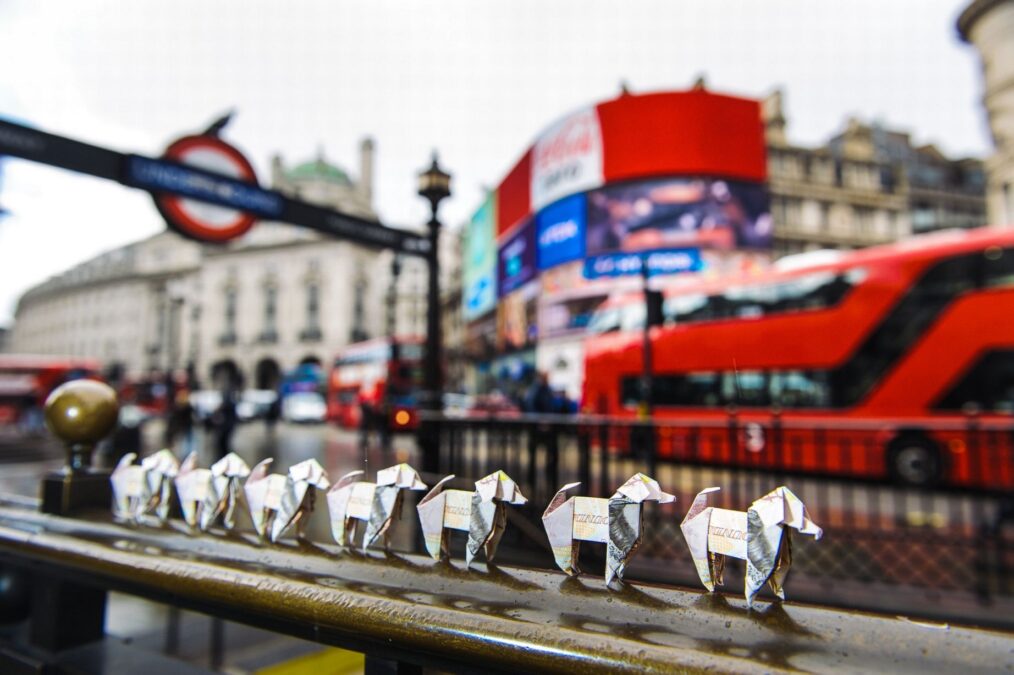Five years ago, we had the opportunity to speak to Ketna Patel, a U.K.-based mixed-media artist, about how she unlocks creative ideas. Patel communicates her incisive thoughts on current social topics through bold images and cheerful colors in a way that provokes not just discussion, but also more in-depth investigation and introspection. Recently, curious about the COVID-19 pandemic has affected our methods to fuel creativity, we reached out to Patel once again.
This time, she discussed with us how the creative process has been positively and negatively impacted by lockdowns and isolation, and how Western mindsets might be further affecting that process. In the Western world, destruction and cataclysmic events have harshly negative connotations, but many Eastern cultures do not share that view. Patel recognizes the worldview that sees times of destruction as times of opportunity.
“With the Hindu and Buddhist background, crises are supposed to be something we shouldn’t shy away from,” she says. “Lord Shiva is the most worshipped god in India, and he’s the god of destruction. If he doesn’t dance the dance of destruction, you can’t have the new creative blades of grass sprouting from the mud. We really respect any kind of destruction.”
The time between an ending and a beginning is rife with opportunity, but many of us get stuck in the ending, tethered to what used to be true for us. Feelings of shock and numbness lead to inaction and missed opportunities.
Instead of fearing destruction or getting trapped in grieving for what was, it is essential to have a healthy respect for these events and lean into the possibilities they bring. Here are Patel’s recommendations for putting change in perspective and practicing creativity in the midst of the pandemic.
Connecting with others is a vital step to fuel creativity.
Begin by making connections with other people. During times of crisis, especially the current situation, many of us are suffering from social isolation. We have been forced to acknowledge that humans, even the most introverted among us, are social animals and crave the feeling of being connected. This need can no longer be met through the regular interactions we might have had on a daily commute or while chatting in a break room. People are distanced, masked and isolated.
If you can find a way to set aside the negative aspects of our current environment, now can be a great time to reach out and build bridges with other humans. Talk to as many people as you can and learn their stories. Conduct polls, collect interviews, engage on social media in a meaningful way. When this is over, or when the new normal has really arrived, you will have established yourself as a person who embraced the community. You will also have gained invaluable knowledge about others, which can significantly expand your creative thinking and problem-solving skills.
You can look at a piece of art from afar and generally appreciate it. But if you study it, examine the details and thought process that went into it, you can discover something completely new. This piece sent me into 2-3 hours of exploring and learning about Rajasthan and the architecture of temples and their heritage. This type of exploration expands the knowledge base I pull from when thinking about creativity or problem-solving.
Gordon Price Locke
President, Chief Marketing Officer
Learn to genuinely appreciate other cultures and all they have to offer.
We tend to live in isolated silos of culture and information, especially in the USA. Because this nation has been the dominant global leader, we have not had to consider other cultures outside our own. But in the post-pandemic world, global cultures could become even more significant stakeholders, and it is essential to learn about them as they become a bigger part of our lives. This goes beyond merely appreciating their food or art. Genuine cultural appreciation requires that we study the history, psychology and worldview of people.
How does this fuel creativity? “As creative people,” Patel says, “it’s always interesting to look at what are the main sources of conditioning for our psychology.” Other countries’ popular culture has been primarily communicated to Americans through TV and movies, but those representations have rarely been inclusive or accurate. We must ask ourselves what we have been conditioned to believe about other cultures that might not be correct and may be holding us back from engaging. Our world holds an abundance of rich, beautiful and inspiring cultures. By challenging our beliefs about them, we can also challenge our long-held beliefs about many aspects of our lives, including the process of creativity.
Explore without a predetermined goal.
In our current climate of confusion and unrest, it can be easy to settle into feelings of being lost and without purpose. Many people feel they have lost their utility in the world, and being creative becomes increasingly difficult as they do not feel their creativity is serving a goal. However, Patel points out, creating and learning without a goal in mind is an integral part of the creative process.
“In the Hindu and Indian cultures, they have always given a lot of credence to the unconscious and subconscious mind,” she says. “The conscious brain is a very poor servant of our larger reservoir of intelligence. If we go through our lives with only a focus on what the conscious outcome will be, we limit the possibilities.”
She urges us to keep our curiosity holistic. When you are genuinely curious, you allow yourself to take down the goal-oriented guardrails around your learning and creativity. Building holistic curiosity will enable us to follow paths of learning about things we feel instinctively drawn to.
This can lead to exploring many seemingly unrelated subjects, but there is almost always a connection—we just do not immediately see it. Following these learning paths without any sort of goals or judgment tied to the process opens us up to see these connections, which others may not have considered.
“The realization of how these subjects are connected will come much later,” Patel says, “or it might just stumble out of your mouth one day when somebody asks you something, and you didn’t even know that you had that thought.” It is in discovering these connections that the best, most impactful and original creativity can be found.
While we must all do some goal-oriented work to sustain ourselves, limiting ourselves to creating only with an end goal in mind is shortsighted, boring and arrogant, because it limits our opportunities to learn. When we do not allow ourselves to explore without an endpoint, we miss the chance to really exercise our minds. No matter what we are creating, it can be assumed that we want our work to have an impact. That impact is an emotional connection or feeling. “There is a lot of research that says that your bigger brain is situated in your heart,” Patel says. “So [learning] is very experiential, very emotive, very feelings-based. You have to put yourself in new situations to even have an emotive reaction. We have to not underestimate our hearts.”
Putting ourselves in unfamiliar territory does a great deal to nurture our creativity. “The more familiar a situation becomes … that is the beginning of the end for creativity,” Patel says. Though many fear the unfamiliar, just as they fear destruction and endings, “you just need a heightened ability to venture into the unknown.”
Discussion about the level of work and effort that goes into doing creative work raises the question: Are people born inherently creative or uncreative? After our conversation with Patel, it is clear that no one is born without the ability to be creative. However, much like a muscle, our creativity will shrink and disappear without proper use. It takes an active choice to fuel creativity each day. You just have to be willing to find comfort in the unfamiliar, and Patel’s tips are perhaps a great starting point.
